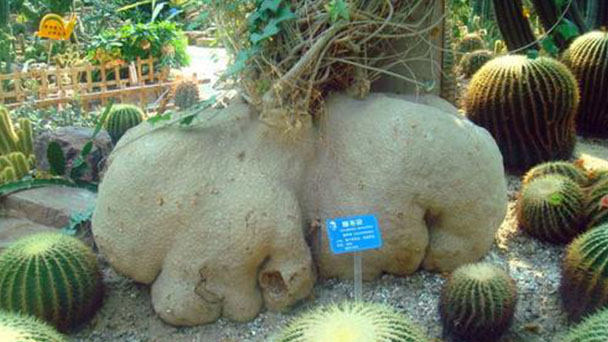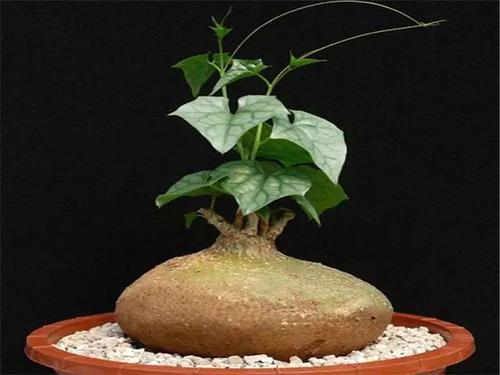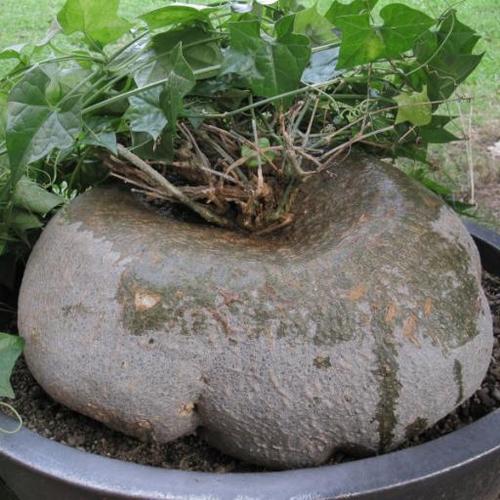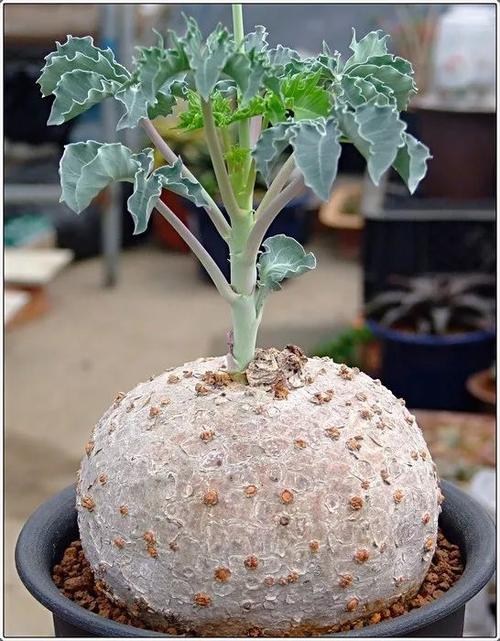Cephalopentandra ecirrhosa profile
Written by Maggie
Aug 24 2021

Cephalopentandra ecirrhosa is a succulent root tuber with a diameter of up to 1 meter. The stem is partly exposed to the ground. It looks like a large stone with a smooth surface, which is earth-colored and has a hard skin.
Cephalopentandra ecirrhosa is a very rare African plant, and the largest male plant in Asia is currently found in the Zhongshan Botanical Garden.
Cephalopentandra ecirrhosa picture

Morphological characteristics of Cephalopentandra ecirrhosa
Cephalopentandra ecirrhosa is a succulent root tuberous plant. Its stem blocks can be up to 1 meter in diameter and are partially exposed to the ground. cephalopentandra ecirrhosa looks like a large stone with a smooth surface, which is earthy-yellow in color and has a hard skin. cephalopentandra ecirrhosa has lush green leaves and can branch several vines from the stem mass with a strong climbing capacity of up to 10 m. The inverted pentagonal leaves bloom in spring and are aromatic. Cephalopentandra ecirrhosa is a famous ornamental root tuber plant, originally produced in eastern Africa. Due to the difference in climate between South Africa and China, the germination rate of seeds introduced by Cephalopentandra ecirrhosa is very low. In the long term, people can only introduce the plant by root tuber.
The distribution of Cephalopentandra ecirrhosa
Cephalopentandra ecirrhosa is a tropical plant of Kenya and Tanzania.
Cephalopentandra ecirrhosa propagation
After the fruits of Cephalopentandra Ecirrhosa are mature, experts can select seeds from them for breeding. Currently, there is no artificial breeding of Cephalopentandra Ecirrhosa in China.

How to grow and care for Cephalopentandra ecirrhosa
Potting medium
Since Cephalopentandra ecirrhosa roots are quite succulent, use a slightly acidic cactus mix or add extra perlite, vulcanite or pumice to regular soil potting soil. A gritty, very free-draining compost is suitable, and clay pots help the plants to dry out between watering. It is like pots with a generous drain hole, re-pot every 2 years.
Frost tolerance
Due to its African origin kept warm in winter, the minimum safe average temperature is 15°C, although it can go lower for short periods. It can be grown outdoors in frost-free climates, and needs to be kept above 10°C and dry in winter.
Light
Cephalopentandra ecirrhosa likes a sunny position, but avoids direct blasting sun in summer. Keep the caudex in the shade.
Watering
Cephalopentandra ecirrhosa should be watered regularly when it begins to produce leaves in spring/summer and kept drier in Winter. Like most caudiciform cucumbers it likes lots and lots of water during warm and hot weather, and is accustomed to growing under other plants, vining up into them. Make sure after watering, that the soil is actually wet. Many potting soil mixes will have only the surface wet, with water running down the outside of the root ball, and most of the soil dry. Run your finger into the soil 15 minutes after watering to check. Too high or too low temperature will induce dormancy.
Maintenance: Repot every two years.

Latest Updated
- Benefits of Bugleweed - 7 Science-backed Health Benefits
- Bugleweed Dangers & Side Effects - Is It Poisonous?
- How to Plant Evergreen Trees - What You Should Know
- When to Plant Evergreens - Grow Guide for Evergreen Trees
- 12 Wonderful Evergreen Shrubs for Your Garden
- 12 Popular Evergreen Plants with Pictures for Beginners
- When And How To Prune A Lilac Bush Like a Pro
- How to Grow & Care for Lilac Vine (Hardenbergia Violacea)
- Japanese Lilac Tree (Syringa Reticulata) Care & Propagation Guide
- Shumard Oak Pros and Cons - What to Know
Popular Articles
- Winter maintenance of Antirrhinum Majus
- How to Grow Terminalia Mantaly Tree
- How to Grow and Care for Crossostephium Chinense
- How to grow Antirrhinum Majus in spring
- Peristeria Elata (Dove Orchid) Profile: Info & Care Guide
- Underwatered Snake Plant (Sansevieria Trifasciata) - Signs And How To Fix
- How to Care for Brazilian Jasmine Plant (Mandevilla Sanderi)
- How to Grow & Care for Graptopetalum Purple Delight in Summer
- Rosa Chinensis (China Rose): Plant Growing & Care Tips
- How to Care for Baby Sun Rose (Aptenia Cordifolia)